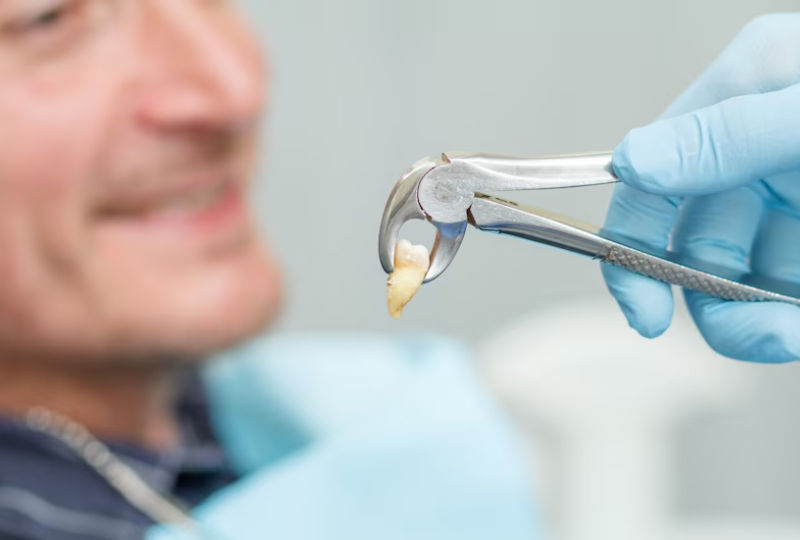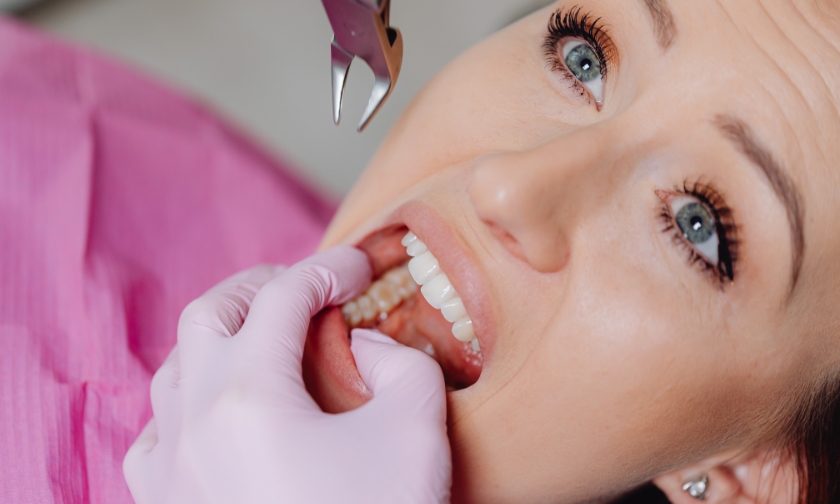943 Finchley Rd, London NW11 7PE
What To Expect During A Tooth Extraction

The prospect of a tooth extraction can be a source of anxiety for many individuals. Whether it’s due to a problematic wisdom tooth, severe decay, or another dental issue, understanding the process and knowing what to expect can help alleviate some of those concerns. In this comprehensive guide, we’ll take you through the various aspects of tooth extraction in Finchley RD, London, from pre-procedure preparations to post-extraction care.
The Need for Tooth Extraction
The decision to undergo a tooth extraction is not taken lightly by dental professionals. Rather, it stems from a thorough assessment of the overall oral health and the specific conditions of the affected tooth. Let’s delve deeper into the reasons that might necessitate this procedure.
Severe Tooth Decay: Among the most common reasons for tooth extraction is advanced tooth decay. When a tooth is extensively damaged by decay, reaching a point where restoration through procedures like fillings or crowns is no longer viable, extraction becomes a crucial step.
Advanced Periodontal Disease: Periodontal or gum disease, if left untreated, can lead to the loss of supporting structures around the tooth, including the bone. In cases where the tooth becomes destabilised due to severe periodontal disease, extraction may be recommended to prevent further complications and maintain the stability of the surrounding teeth.
Impacted Wisdom Teeth: Wisdom teeth, or third molars, often emerge during the late teens or early twenties. However, due to limited space in the jaw, these molars may become impacted, causing pain, swelling, and potential misalignment of adjacent teeth. Tooth Extraction of impacted wisdom teeth is a common preventive measure to alleviate discomfort and prevent future oral health issues.
Overcrowding: Overcrowded teeth can lead to a range of dental problems, including difficulty in maintaining proper oral hygiene, increased risk of decay, and bite misalignment. In cases where orthodontic treatment is insufficient to address overcrowding, extraction might be recommended to create space and promote optimal alignment.
The Tooth Extraction Procedure
Consultation and Examination:
Before the extraction, your dentist will conduct a thorough examination, possibly including X-rays, to assess the condition of the tooth and its surrounding structures. They will discuss the reasons for potential complications in extraction and answer any questions or concerns you might have.
Pre-Procedural Preparation:
If deemed necessary, your dentist might prescribe antibiotics before the extraction to prevent infection. On the day of the procedure, it’s advisable to wear comfortable clothing and arrange for transportation, especially if you will be under general anesthesia.
Anesthesia:
Most tooth extractions are performed under local anesthesia, which numbs the specific area around the tooth. You’ll be awake during the procedure but won’t feel pain. In more complex cases or multiple extractions, general anesthesia may be used, rendering you unconscious throughout the procedure.
Extraction Process:
Once the anesthesia takes effect, the dentist will use specialised tools to loosen the tooth within its socket. For multi-rooted teeth, they may section the tooth to facilitate easier removal. While you may feel pressure during these maneuvers, the goal is to minimise any sensation of pain.
Actual Tooth Extraction:
With the tooth adequately loosened, the dentist will use forceps to gently and carefully extract the tooth from its socket. You might hear a slight cracking sound, which is normal and typically associated with the tooth’s removal.
Follow-Up Appointments:
Your dentist will schedule follow-up appointments to monitor your healing progress. It’s crucial to attend these appointments and report any unusual symptoms or concerns promptly.
Tooth Extraction Recovery and Aftercare
Immediate Post-Extraction Care
Immediately after the extraction, your dentist will provide a piece of sterile gauze for you to bite down on. This helps control bleeding and allows a blood clot to form in the extraction site. Maintain gentle pressure for the recommended time, typically 30 minutes to an hour.
Managing Discomfort
It’s normal to experience some discomfort after the anesthesia wears off. Your dentist may prescribe pain medication, or you can take over-the-counter pain relievers as directed. Applying an ice pack to the affected area for the first 24 hours can also help reduce swelling and ease any pain.
Avoiding Certain Activities
In the initial days following extraction, avoid activities that can disrupt the healing process. Steer clear of vigorous physical activities, smoking, and drinking through straws, as these actions may dislodge the blood clot or interfere with proper healing.
Maintaining Oral Hygiene
Despite the sensitivity of the extraction site, maintaining good oral hygiene is crucial. Continue brushing your teeth, but be gentle around the extraction area. Avoid direct contact with the wound, and use a soft-bristled toothbrush to prevent irritation.
Staying Hydrated
Drink plenty of water to stay hydrated, but avoid extremely hot or cold beverages in the initial stages of recovery. Hydration supports overall healing and helps prevent complications.
Monitoring for Complications
Keep a close eye on the extraction site for any signs of complications, such as excessive bleeding, persistent pain, or signs of infection (increased swelling, redness, or pus). If you notice anything unusual, contact your dentist promptly.
Long-Term Oral Care
Once the extraction site has healed, resume your regular oral hygiene routine. If the extraction was part of orthodontic treatment, continue with any additional steps recommended by your orthodontist.
Facing a tooth extraction may seem daunting, but understanding the process and knowing what to expect can significantly ease the anxiety associated with the procedure. From pre-extraction preparations to the recovery period, following your dentist’s guidance is key to a smooth experience. Remember, any concerns or unusual symptoms should be promptly reported to your dentist for proper evaluation and care. By being informed and proactive, you can navigate the tooth extraction journey with confidence, ensuring a healthier and pain-free smile in the long run.






